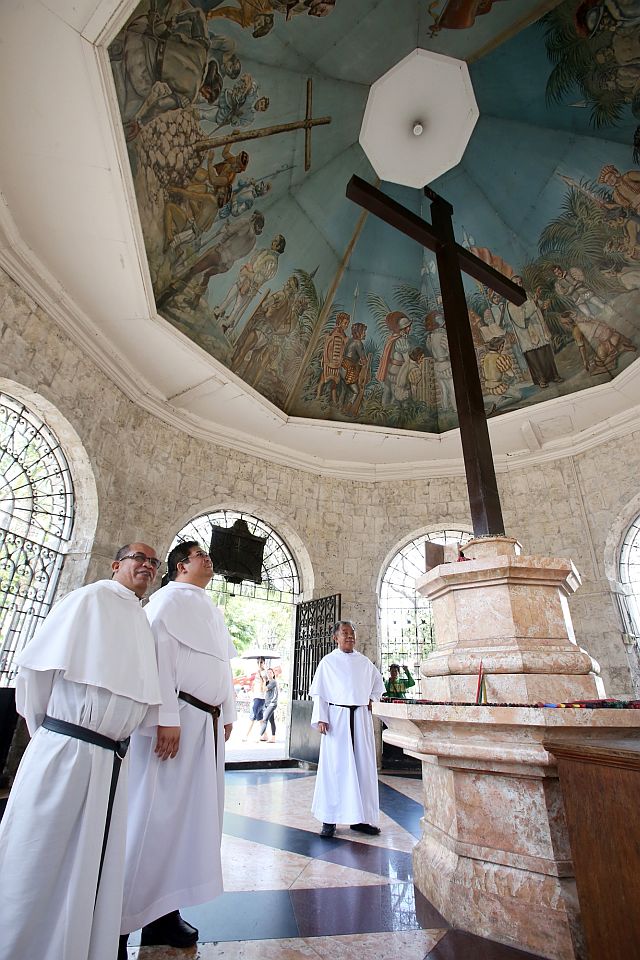
Making our history and culture come alive for visitors like making their visits at the Magellan’s Cross more memorable by letting them interact with the candle vendors there is one way to bring in more tourists from Japan and Korea.
cdn file photo
Local tourism stakeholders need to spice up their products if they want to attract more Japanese and Korean visitors, both of whom have been coming in and out of Cebu for so long.
Alice Queblatin, president of the Cebu Association of Tour Operations Specialists (Catos), said it is now time to “go beyond sightseeing” and offer experiential activities by “bringing history and culture alive.”
“The Koreans and Japanese are no longer satisfied with shopping around the city. They want to do more than just sightseeing. They want to understand our culture,” she said in a recent interview.
Queblatin cited as an example how tourists stop over the Magellan’s Cross in downtown Cebu and are told about the candle vendors there.
Instead of just stopping by and then leaving after taking photos, tourists should be allowed to interact with the candle vendors and allow them to be prayed for.
She said that Europeans are into those sorts of activities as well.
Korea and Japan are Cebu’s first and second biggest markets, respectively, in terms of visitor volume.
The homegrown Plantation Bay Resort and Spa in Mactan has seen an increase in the number of their Japanese visitors in the past few months due to additional direct flights between Cebu and the “Land of the Rising Sun.”
Efren Belarmino, resort general manager, said there is even a growing interest among local and Japanese tour operators to ask several airlines to mount more direct flights between Cebu and Japan.
“Our number one market right now is Korea with Japan trailing behind and slowly catching up,” he said.
Japan is the second biggest market behind Korea in terms of visitor volume for the whole Cebu province.
Preliminary data from the Department of Tourism in Central Visayas (DOT-7) showed Cebu welcomed 132,342 tourists between January and April this year, up by 5.7 percent from 125,203 during the same period in 2016.
Last month, Belarmino led a 14-man delegation to Japan to conduct a sales blitz in four key cities including Fukuoka, Tokyo, Nagoya and Osaka.
According to the resort manager, these are the cities with direct connections to Cebu or Manila.
Currently, local carriers Philippine Airlines and Cebu Pacific as well as Tokyo-based budget airline Vanilla Air offer direct flights between Cebu and Japan.
Vanilla Air in December last year began offering daily direct round-trip flights from Cebu to Japan through Narita Airport, becoming the first Japanese airline to mount a regular nonstop service to central Philippines.
The sales blitz came two days before President Rodrigo Duterte visited Japanese Prime Minister Shinzo Abe, which Belarmino said signifies the resort’s commitment to support the Philippine government in its bid to develop the nation through tourism-based initiatives.
Belarmino said they visit Japan every year to help sustain the influx of visitors from this market segment.
Data from JTB Tourism Research and Consulting Co. showed that the Philippines was the eighth most visited place by Japanese tourists as of August 2017.
“For the Japanese, Cebu is the number one destination in the Philippines,” Belarmino said.
Daisuke Tonai, executive director at the Japan National Tourism Organization (JNTO) preparation office for Manila, earlier said that he hopes other airlines would consider mounting more flights between Cebu and Japan.
The additional services would address the demand from Japanese travelers who want to enjoy Cebu’s year-round warm weather or are looking to take English classes for the medium and long terms.